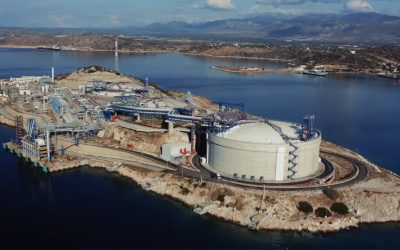After the Narnian winter we’ve just had, a reasonable person could easily agree with controversial Friends of Science spokesman Dr. Tim Ball on this much: Global warming is just another unfulfilled government promise.
So, why are we still preparing to spend money on it? Good question.
Ball is controversial because the retired science professor bucks the prevailing wisdom on global warming, calls the science behind it wrong, and questions the good faith of the governmental agencies promoting it. He gets flak. He also gives it, as he did Thursday to a crowd of 400 at Calgary’s Metropolitan Centre, in an event sponsored by a reinvigorated Friends of Science, and the Frontier Centre for Public Policy. For instance, the idea that carbon dioxide generated by human activity is unnaturally warming the atmosphere through some supposed greenhouse effect is not (and never was) supported by facts that were reasonably easy to obtain. Want to know where the problem is? It’s cycles related to solar activity.
At the risk of bastardizing a sophisticated presentation, the dots join like this. The sun is constantly emitting cosmic rays: Those that reach the Earth stimulate cloud creation, which has a cooling effect. But, when the sunspot cycle is active, the flow of cosmic rays is disrupted, fewer reach Earth’s atmosphere, cloud cover is diminished, and the Earth warms.
It was seven years ago that local Friends advocate Albert Jacobs laid this out for the Herald editorial board. At that point, it was more of a prediction, as the solar cycle was popping and some interpretations of global temperature data suggested ambient temperatures were rising. Since then though, the sun has gone quiet and the last seven years of satellite data show a distinct cooling trend–even as CO2 levels continue to rise.
Yes, there’s still melting in the Arctic. But is that more of a delayed reaction, not unlike a cast iron frying pan that stays hot for a while after it has been removed from the heat?
Could be. Not a bad evidence-based prediction, anyway. And before Canada diverts billions of dollars to CO2 reduction, you’d think it would make reasonably sure.
So, the Friends are back after a few years of discouraged retirement, trying to reopen the warming-science debate their opponents say should remain forever closed.
Most of the Calgary-based group of geologists are old enough to have lived through a few distinct eras of climate change themselves. Some can even remember the celebrated patrols through the Northwest Passage of the RCMP schooner St. Roch during the Second World War, which is another way of saying that the Earth’s climate being as prone to change as it is, this isn’t the first time the Arctic has thawed sufficiently to be navigable. (Indeed, Norwegian explorer Roald Amundsen made it through in 1903-06, and the Vikings got as far as Ellesmere Island a thousand years ago, before things cooled again.)
Initially, the group got traction. At that ed-board meeting, Jacobs pointed out that core samples from ancient ice packs showed atmospheric CO2 levels trailed, rather than preceded a rise in temperature: The bubbles you see in boiling water are the release of air held in solution at lower temperatures, and as the seas warm, they too give up dissolved gases, CO2 included.
And, did we know the global-warming crowd relied on computer modelling more than observation, and that the guide for policy-makers prepared by the UN’s International Panel on Climate Change was written by bureaucrats, and was not in fact the lowest common denominator of the views of 1,700 scientists, just the ones the bureaucrats liked? We did not, but it sounded possible: We had just learned Canada’s Kyoto targets had been decided by “think of a number” methods intended to embarrass the Yanks at an international gathering.
The Friends, in short, made a good case and while I didn’t feel qualified to adjudicate it, it seemed to me that somebody who was, should.
But, that never happened. Instead, a well-funded global warming lobby steamrollered the world’s governments and mainstream media, Canada’s among them.
Indeed, it became professionally suspect to be a “climate-change denier.” Oil companies one might have expected to argue the science, rolled over: Business is business. The provincial government listened, once, but figured they couldn’t fight the gathering consensus and in Ottawa, the new Conservative government quickly realized that in any contest between ice-cores and cuddly polar bear cubs, the votes were with the bears.
And after that, there was the inconvenient Al Gore who, despite fostering a film loaded with misinformed or dangerously stretched data, rode the wave of future rising sea levels to an Oscar.
“It was,” Ball told a Calgary audience Thursday, “the greatest scientific deception in history.”
The Friends want to raise $500,000 to take their show to the airwaves.
I wish ’em luck. And a fair hearing.


